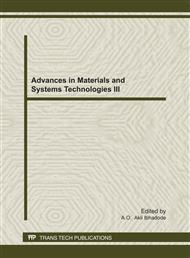p.177
p.185
p.191
p.199
p.205
p.215
p.223
p.233
p.241
Comparative Analysis of Gaussian Minimum Shift Keying and Binary Differential Phase Shift Keying Signalling Schemes with Maximal Ratio Combiner over Rayleigh Environment
Abstract:
This paper presents the investigation of two transmission schemes with a diversity combining technique over Rayleigh fading channels. Each of Gaussian Minimum Shift Keying (GMSK) and Binary Differential Phase Shift Keying (BDPSK) transmission schemes was considered with a diversity combining technique known as Maximal Ratio Combining (MRC). Rayleigh fading channel is used statistically to model the communication channel where there is no direct line of sight, which is the attribute of mobile communication. Mobile communication industry is faced with the problem of providing the technology that will be able to support a wide variety of services irrespective of distance, other signals interferences, noise, and objects in the medium of transmission. The system model for the received signal was developed using Jakes model under two propagation paths. The developed model was simulated based on the developed algorithms using MATLAB application package. Two different types of data, randomly generated symbols and image data, were used as the information signal. The results obtained showed that the GMSK scheme had higher average Bit Error Rate (BER) values than the corresponding BDPSK scheme which indicates better performance of BDPSK when the same numbers of bits were transmitted over this channel. Consequently, the quality of the images received with both signalling schemes was in agreement with the BER results. The results obtained showed that though GMSK scheme is comparatively more immune to noise and other interfering signals in this type of fading environment but BDPSK scheme has the advantage of feeding back the output signal to form differential with the input signal which invariably resulted in better average BER of the signal.
Info:
Periodical:
Pages:
205-214
Citation:
Online since:
October 2011
Authors:
Price:
Сopyright:
© 2012 Trans Tech Publications Ltd. All Rights Reserved
Share:
Citation:


